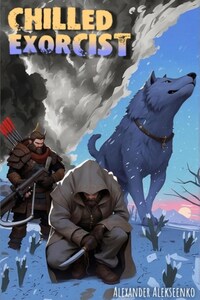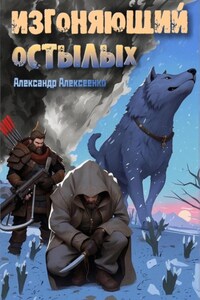Preface One: "What is this book about?"
Dedication: This book is dedicated to my father
Preface One: "What is this book about?"
The action of this book takes place in the third era of Terresia. The protagonist becomes a prisoner of the treaty and is forced to participate in the events of the new development of the Rube Tract. Castle Feanoth has high hopes for a mutually beneficial treaty with Kostegrad, and even Lord Stag is willing to give up his youngest daughter for the Keeper of those lands. The only difficulty is that almost the entirety of the Rube Tract is mired in gray earth, an infestation dangerous to humans, animals and vegetation alike.
At that time, Count Myrtel Feanoth, heir to the castle of the same name and the Barrier Lands, decides to hold a tournament to cull those too weak to participate, to select the most trustworthy warriors who will travel to the Rube Tract to purge it of the hordes of chilled and infected creatures of the Polog of Ignorance. "Anything larger than a perotl must go into the ground," the Count orders.
Finding it insufficient to develop the tract with knights and mercenaries alone, Count Mirtel sent out a call to the Order. He needed specialists who had fought the monsters of the Zagorje – hunters who had spent five years holding back far more fearsome creatures, serving under the control of the Guardian of their fortress. And then the Council of the Fortress of Rukh, having previously assessed the situation, formed a battle group to clear the tract – fourteen fighters, ready to fulfill the Order's commission and bound themselves to it by a treaty.
Separated from kings and edicts, the Hunter holds a very high position in the hierarchy of the Empire. However, he is considered "unclean" by the priests of Hoth. Emperor Retreath Grave Mohawk himself has separated the hunters and given them a special position to allow for trials and investigations of crimes.
Envnir, the book's protagonist, receives not a simple assignment from the Order, but a murderous mission to mop up the tract along with thirteen other hunters of the Chilled. Becoming a participant in the events, he is forced to seek a solution to the problems heaped upon him, and the reaper of the dead has all the means to fulfill the tasks set before him by the Count. Whether he is driven by predestination, or whether his future depends on his will alone, or perhaps both, and whether he will be able to reach the end of the Rubezhny Tract – he will find out on the way.
Preface Two: "A horror tale is…"
Yet the genre of fairy tale horror suggests something like the fairy tales of the Brothers Grimm. In the practice of some parts of Europe, there was a tradition of telling children scary bedtime stories to make them "sleep better." Growing out of these stories that we read to you and me as children, the actual fairy tales are like the system of modern chess (chess used to have different pieces before they were generally standardized). They were trimmed down and presented in a way that would amuse a child, but not scare them. It is only when you read the older, older versions, where the Tsarevich goes deeper into the forest and he comes across the third Baba-Yaga, the Bone Leg, that you begin to wonder what a modern story in the folkloric horror genre should be like?
The fairy tale style involves small stories. Events that the traveler encounters along the way, whether it's a waystone or the next occupant of the house on chicken legs. This is also the style in which the first stories of the witcher are composed. Geralt arrives in a deserted village and is discovered by a monster, welcoming him in. And it's not just any monster, it can grant wishes. Andrzej Sapkowski worked masterfully with speech and even suggested its progressive development, reflecting the movement and trends of the Russian language when writing his work. In doing so, he set the bar high for anyone daring to try their hand at the dark fantasy genre. In the aftermath, these small stories will grow into something more, a child of purpose will appear. And then people will show and tell for a long time that "this man came from the north…"
I've long been driven by the desire to write something like this. The preparation of a whole, dark, special world dusted on the shelf and waited for the hour when I will return to it. And the time came. I saw a new contest from LITNET and immediately realized – I want to participate in this contest. I have a clear idea of what I want to write about.
If you want to learn about Terresia's past and read additional material, check out the appendices of this book. Appendix One: "Memo". This piece of paper was the reason for the contract. Appendix Two: "The Ages of Terresia" will tell you about the bygone times of this world. Appendix Three: "The Expedition of Jodmungheim and Grave Mohawk", or otherwise "The Legend of Sunset and Dawn". Will elaborate on the events of the journey. Appendix Four: "Letter from Inquisitor Flawkins". Highlights the report that the Inquisitor compiled. Appendix Five: "Map of Terresia: Towns and Villages". Tells briefly what places have been developed by people on Terresia. There is also a visual map here (hopefully I remembered to add it). Appendix Six: "The Prophecy of the Mute-Birth and the Forgotten Monolith". This describes the events that took place immediately after the prophecy, and about Liyam the Grave Mohawk, the first to be killed by his own. Appendix Seven: I decided not to add since I posted pictures in the text.










